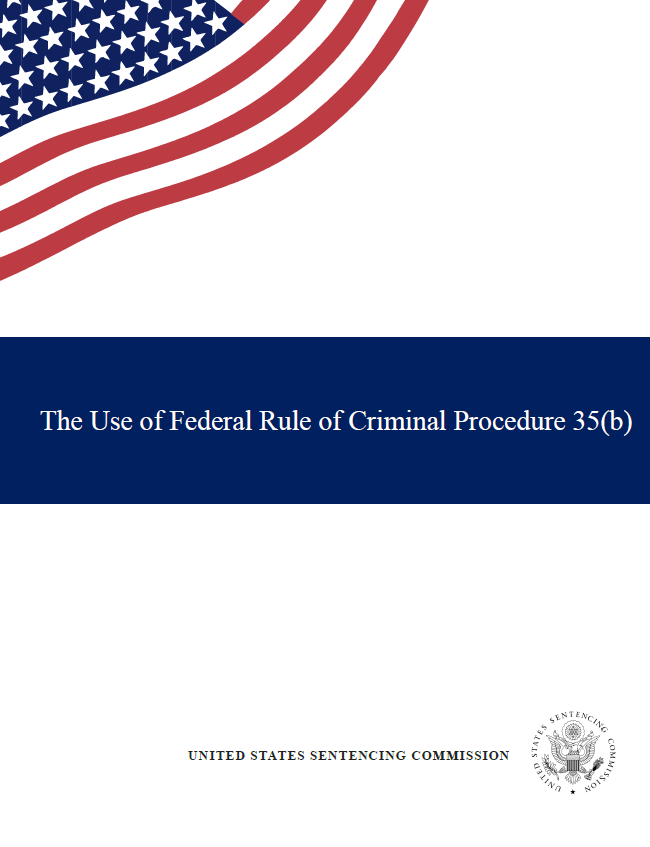Summary
 This report examines sentence reductions for offenders who cooperate with the government in its efforts to investigate or prosecute others. Offenders can receive credit for their “substantial assistance” in at least two ways; at the time of sentencing (USSG §5K1.1 departure motions) and after sentencing (Federal Rule of Criminal Procedure 35(b) motions). In both instances, the government must make a motion for a lower sentence.
This report examines sentence reductions for offenders who cooperate with the government in its efforts to investigate or prosecute others. Offenders can receive credit for their “substantial assistance” in at least two ways; at the time of sentencing (USSG §5K1.1 departure motions) and after sentencing (Federal Rule of Criminal Procedure 35(b) motions). In both instances, the government must make a motion for a lower sentence.
This publication discusses the history and current use of Fed. R. Crim. P. 35(b). It also presents data on the number of Rule 35(b) reductions and the jurisdictions where they are granted; the effects of Rule 35(b) reductions on sentences; and the offense and demographic characteristics of offenders who receive such reductions. The report also compares the circumstances of offenders receiving Rule 35(b) reductions with those who received USSG §5K1.1 departures. (February 2016)
Key Findings
A review of the 10,811 cases in which Rule 35(b) reductions were granted over the past six years suggests the following conclusions:
- Rule 35(b) sentencing reductions are used relatively rarely, but a few districts make frequent use of Rule 35(b) sentencing reductions. There is no clear data-based explanation for these differences, as these districts vary substantially from one another in overall case load, offense mix, and demographic composition.
- Most offenders receiving a Rule 35(b) reduction were originally sentenced within the guideline range. This suggests that courts are rarely departing or varying for reasons other than substantial assistance with this group of offenders.
- Most offenders receiving a Rule 35(b) reduction were convicted of a drug trafficking offense that carries a mandatory minimum penalty.
- Rule 35(b) sentencing reductions generally provide less benefit than do §5K1.1 substantial assistance departures. This general statement holds true whether the Rule 35(b) sentencing reduction is compared to the §5K1.1 substantial assistance departure in terms of the ultimate sentence length or by the extent of the reduction from the original sentence. The relatively high number of Rule 35(b) offenders who are convicted of drug and firearms offenses, though, as well as the relatively high number of those subject to mandatory minimum penalties, suggests that these offenders may receive a lower reduction because they are more serious offenders.
- Although Rule 35(b) sentencing reductions are usually less beneficial to offenders than are §5K1.1 substantial assistance departures, offenders who receive both a §5K1.1 departure and a Rule 35(b) sentencing reduction receive the largest overall reduction in their sentences, regardless of how that reduction is measured.
- Offenders sentenced in jurisdictions that primarily use Rule 35(b) sentencing reductions overall receive less of a benefit for their substantial assistance than do offenders in jurisdictions that rely primarily on §5K1.1 departures or a combination of Rule 35(b) reductions and §5K1.1 departures.
